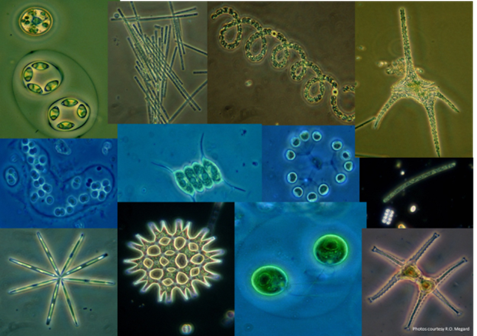
A research team studying ways to increase algae growth for use in biofuels at the Department of Energy’s Oak Ridge National Laboratory has made a fundamental discovery about the relationship between biodiversity and ecosystem productivity.
The research findings, published in Ecosphere, show that while increasing the number of species in the ecosystem generally improved algal productivity, species diversity is not the critical factor in achieving higher algal yields. Grouping species that have complementary traits is essential to boosting productivity.
Researcher Shovon Mandal of ORNL’s Environmental Sciences Division has been studying algal traits to determine which species combinations could maximize bioenergy productivity—as increasing algal biomass yield per acre is key to the potential use of algae as a renewable fuel source. For this study, he focused on nitrogen absorption in different algal species as a critical functional trait.
Nitrogen is a key nutrient that can increase crop yields and, in excessive amounts, can cause eutrophication (when plants grow densely enough to consume all the oxygen in aquatic systems like ponds, causing animals to die). Mandal grew the algal species separately and in multispecies groups in different forms of nitrogen, including a mix that simulated wastewater.
Algal species with different affinities for the various forms of nitrogen in wastewater (ammonia, nitrate, and urea) were more productive when grouped than microalgal communities containing species with affinities for the same form of nitrogen. This indicates that the algal species were able to fill different niches in the ecosystem and use resources in their environment more efficiently.
“If the species ‘liked’ the same type of nitrogen, the result was competition, which limited productivity,” ORNL principal investigator Teresa Mathews said. “Diverse functional traits were the key drivers behind increased ecosystem productivity.”
This fundamental new knowledge has many applications, including the sustainable production of biofuels from algae, wastewater treatment, and managing eutrophication in aquatic systems.
The research was supported by the DOE Office of Energy Efficiency and Renewable Energy, Bioenergy Technologies Office.
ORNL is managed by UT-Battelle for the Department of Energy's Office of Science, the single largest supporter of basic research in the physical sciences in the United States. DOE’s Office of Science is working to address some of the most pressing challenges of our time. For more information, please visit www.energy.gov/science/.

